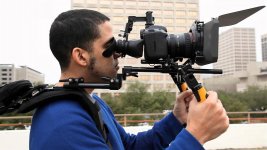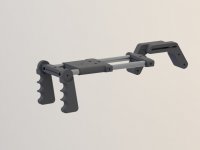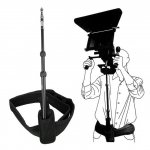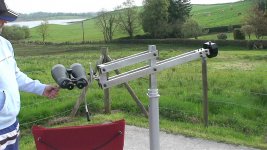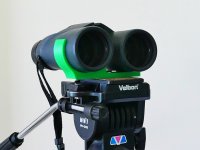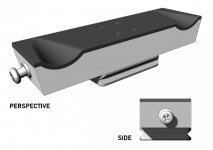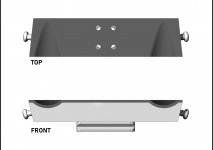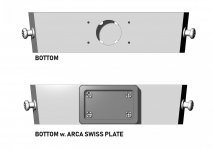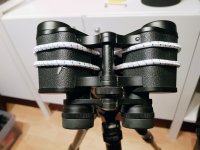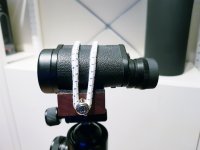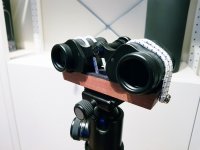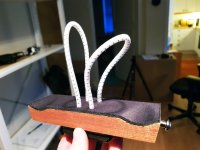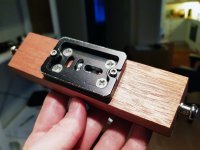Hi Jerry,
Spontaneously, I'd think that an A frame resting on a hip belt might help as it relieves you from much of the weight of the heavy binoculars. In practice, it might be a bit of an inverted Y frame with a folding link at the junction to facilitate carrying:
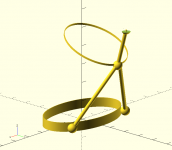
I'm not really familiar with video camera rigs, but I believe they mainly serve to avoid tilting and bobbing during movements of the camera man, which might be a different kind of stabilization than what we're looking for.
Regards,
Henning
It would be very interesting to see what each of you could do about the challenge of holding heavy binoculars steady for extended periods. Can either of you think of a way to go beyond tripods, mono pods, shoulder stocks and image stabilization?
Spontaneously, I'd think that an A frame resting on a hip belt might help as it relieves you from much of the weight of the heavy binoculars. In practice, it might be a bit of an inverted Y frame with a folding link at the junction to facilitate carrying:

I'm not really familiar with video camera rigs, but I believe they mainly serve to avoid tilting and bobbing during movements of the camera man, which might be a different kind of stabilization than what we're looking for.
Regards,
Henning





